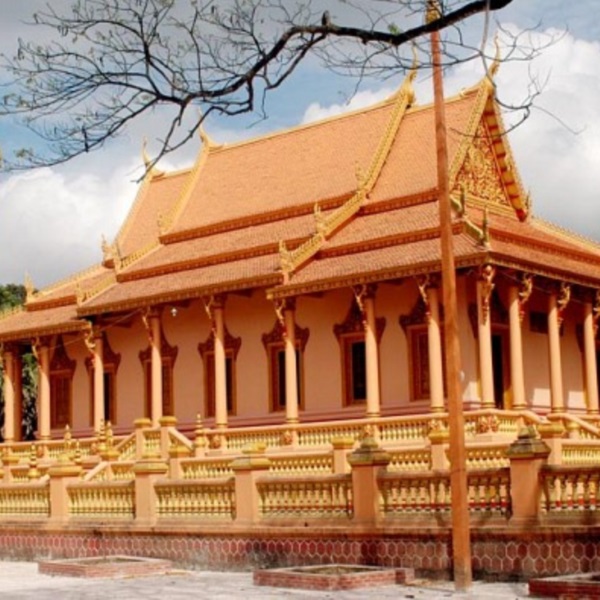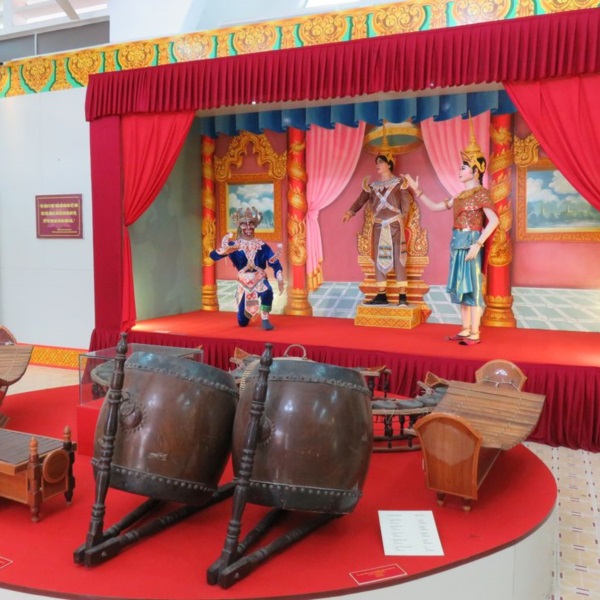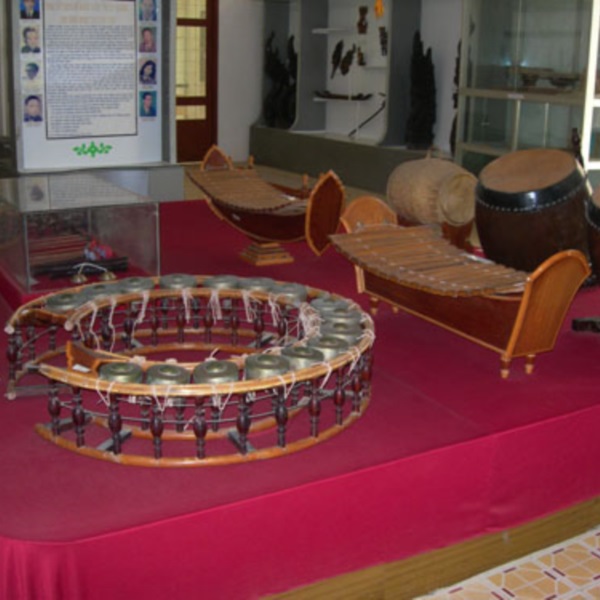If history of a new land is in your top concern for a journey, the Khmer museum is surely a must-visit place when you make a trip to Soc Trang Province, the Mekong Delta. The Khmer museum displays dozens of valuable artifacts, presenting the cultural and spiritual life of the ethnic community of Khmer from generation to generation. Something you find out for a visit there is traditional costumes, models of houses, pagodas, and musical instruments.

How to get to the Khmer museum from Ho Chi Minh City
To reach the Khmer museum, what you must do first is to find ways to Soc Trang Province. It’s easy to do that since bus lines to Soc Trang are always available at Mien Tay Bus Station – 395 Kinh Duong Vuong Street, An Lac Ward, Binh Tan District.
Upon arrival in Soc Trang City, Soc Trang Province, you’ll find out the central market. The Khmer museum is two minutes’ walk from this market. The museum is opposite Kh’leang Pagoda and situated at 53 Ton Duc Thang Street, Ward 6, Long Phu Town, Soc Trang City.
An alternative to get to the Khmer museum from Ho Chi Minh City is to take a tour to the Mekong Delta. A plus point of the tour is that you not only visit the Khmer museum, but also explore other fascinating spots in Soc Trang Province, such as Nga Nam Floating Market, Bat Pagoda, Tan Long Stork Sanctuary, Kh’leang Pagoda, and My Phuoc Island.
What are inside the Khmer museum?
Erected in 1938, the Khmer museum was formed by two zones. The exhibition zone is the Xamacum Assembly House and the office zone. The museum displays countless precious artifacts, offering you an outlook on the spiritual and cultural life of the Khmer community.

The Khmer community has a population of over one million and is portrayed through two cultural museums; one is in Tra Vinh and the other is in Soc Trang. If you pay a visit to the museum in Soc Trang, what you will see comprise collections of Black masks, costumes, musical instruments, sets, books of leaf, and many other things of Khmer culture. This visit entitles you to obtain more understanding of the Khmer community and know why it has become a crucial part in the population of Soc Trang Province.
After the country had recovered the independence from foreign invaders during two resistance wars, groups of people in Soc Trang Province were Kinh, Hoa, and Khmer. Despite the fact that all of those groups have lived together for a long time in the same region, each carries their own characteristics distinguishing themselves from one another in terms of lifestyle, culture, customs, art, religion, festivals, and beliefs. Among the characteristics of the Khmer community in southern Vietnam is the habit of living in urban areas. They have lived together with Kinh and Chinese people for a long time. They have exchanged culture with other groups and created ways to enrich their community.
Khmer Museum displays a collection of more than 13 thousand precious artifacts. Over 50% of those things are the Khmer donors. The museum is regarded as the pearl of the Khmer community, so there are up to 200,000 visitors to this spot every year. This visit helps you to learn more about the historical, cultural, and patriotic traditions during the time of battling with invaders for the national independence.

A small zone for displaying hand tools which enable visitors to understand about the agricultural production of the Khmer people from previous centuries. Furthermore, the zone also presents the cultural activities and economic life, beliefs, and religions of the Khmer group. The tools reflect the remarkable skills of ancient artisans.
In Soc Trang Province, there are plenty of spots for sightseeing, but you certainly visit Khmer Museum because of values it brings back. You will realize that the Khmer people have a high aesthetic mind whereby they could simulate real life to make their own cultural beauty and create elaborate traditional family items and production tools for life. This shows that they have great skills as expert artisans.
Survey data of Soc Trang Museum reveals many artifacts at present are still everywhere in Soc Trang Province. For instance, Soc Do Pagoda has preserved ancient Buddhist scriptures carved on the palm for a long time.



